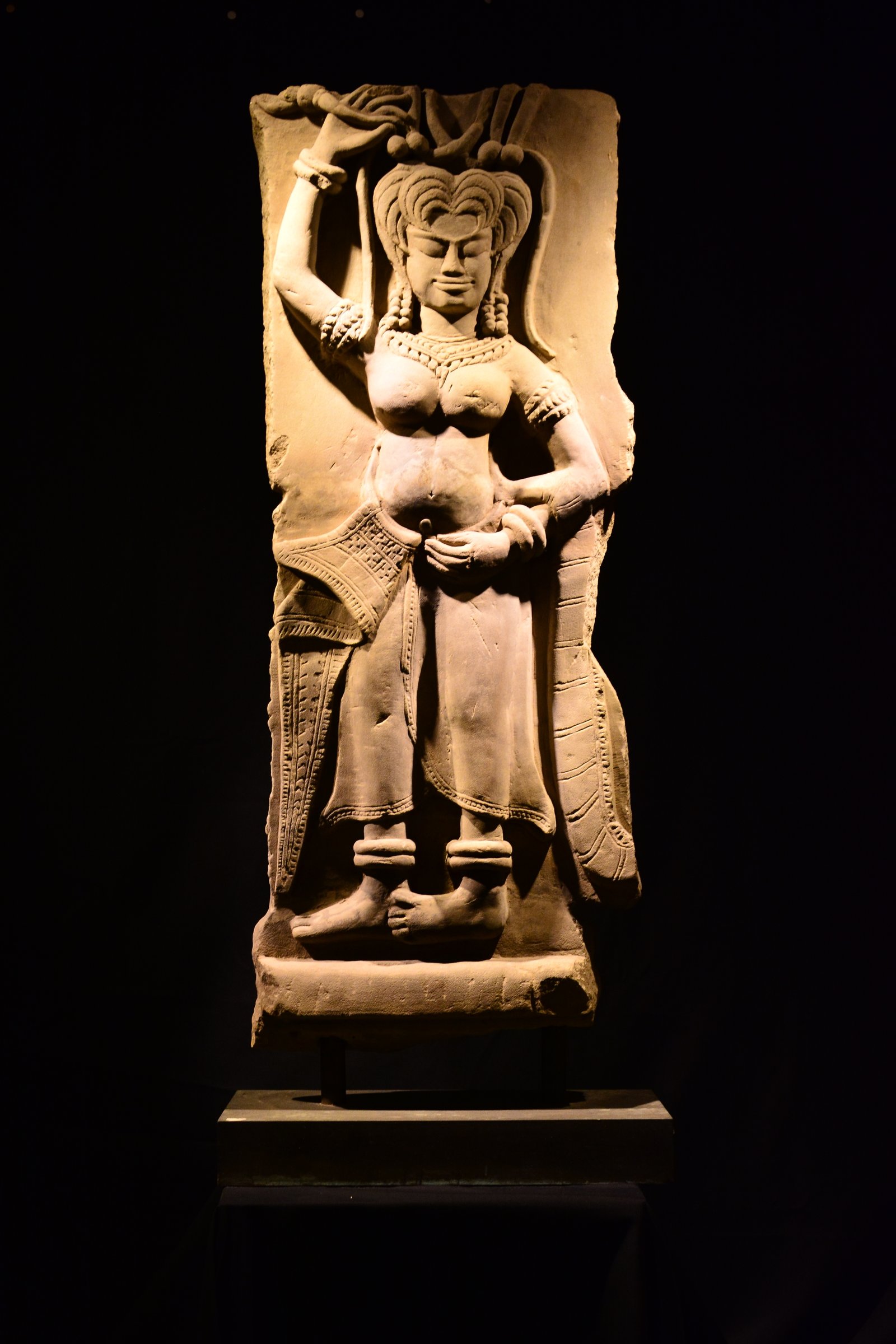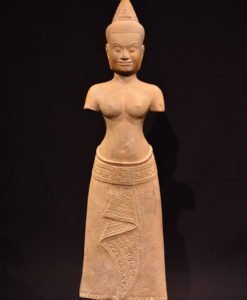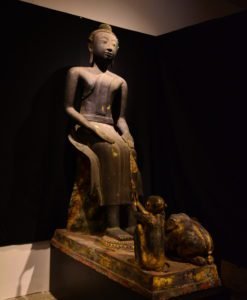Exquisite 75cm Bayon Period Sandstone Apsara – 12th Century Khmer Masterpiece
The Khmer Empire’s artistic zenith during the late 12th to early 13th centuries gave rise to the Bayon style,
renowned for its intricate detailing and spiritual depth. A quintessential representation of this era is the 75cm sandstone Apsara statue—a testament to the empire’s devotion to celestial beauty and divine grace.
ITEM DESCRIPTION
Description
This 95cm Bayon-period sandstone Apsara statue is a remarkable representation of Khmer artistic mastery, capturing the grace and divine elegance of celestial dancers. Sculpted in fine sandstone, this piece embodies the spiritual and aesthetic principles of the Bayon style, a defining artistic movement of the Khmer Empire under King Jayavarman VII (1181–1218 CE).
Apsaras, revered in Hindu and Buddhist traditions, were believed to be celestial dancers who bridged the divine and earthly realms. This figure, with its exquisite posture and intricate detailing, reflects the Bayon period’s emphasis on movement, expression, and spirituality.
Artistic and Historical Significance
The Bayon period marked a transition in Khmer art, characterized by its expressive figures and intricate relief carvings. This era, influenced by Mahayana Buddhism, introduced softer facial features, elaborate adornments, and dynamic poses, all evident in this Apsara carving.
Key elements of the Bayon artistic style include:
-
Expressive facial features: A serene expression with almond-shaped eyes, gently arched eyebrows, and full lips forming a subtle smile, symbolizing divine grace.
-
Dynamic dance posture: The right arm is elegantly raised while the left extends downward, evoking fluid movement.
-
Intricate jewelry and adornments: The figure is adorned with detailed necklaces, armbands, and bracelets, reflecting the opulence associated with celestial beings.
-
Elaborate hair arrangement: A distinctive Bayon-period hairstyle, possibly symbolizing Mount Meru, the sacred center of the universe in Khmer cosmology.
Material and Craftsmanship
Sandstone was the preferred medium for Khmer sculptors due to its durability and fine-grain texture, which allowed for intricate detailing. Research indicates that Khmer artisans sourced sandstone from quarries like the Phnom Kulen and Khorat formations, known for their siliceous composition ideal for sculpting. (ResearchGate, 2023)
This statue’s patina and natural aging attest to its authenticity, with subtle weathering and mineral deposits adding to its character. Unlike many fragmented artifacts, this piece retains its arms and original gesture (mudra), making it a rare and valuable example of Bayon-period Khmer sculpture.
Symbolism and Religious Context
During the reign of Jayavarman VII, Apsaras were often depicted in temple reliefs, particularly in iconic structures such as Bayon, Ta Prohm, and Banteay Kdei. These celestial dancers symbolized:
-
The blessings of the divine realm, as they entertained the gods and guided souls to spiritual enlightenment.
-
The prosperity and fertility of the kingdom, reinforcing the ruler’s divine legitimacy.
This Apsara’s mudra and posture align with iconographic traditions found in Angkor Thom and other religious sites, where similar figures were used to sanctify temple spaces. (Michael Backman Ltd.)
Origin: Cambodia
Period: Bayon
PRODUCT DETAIL
Medium: Sandstone
Dimensions:
Height 95 cm
Length – cm
Wide 38 cm
Condition Report: –
Please keep in touch for Price and more information: Mallika1013@gmail.com





















